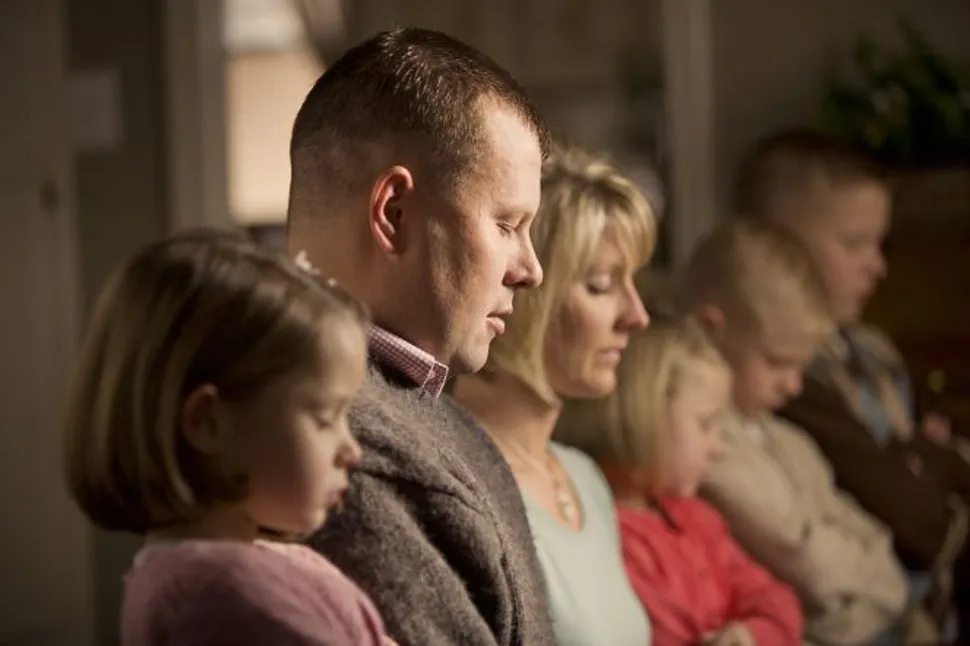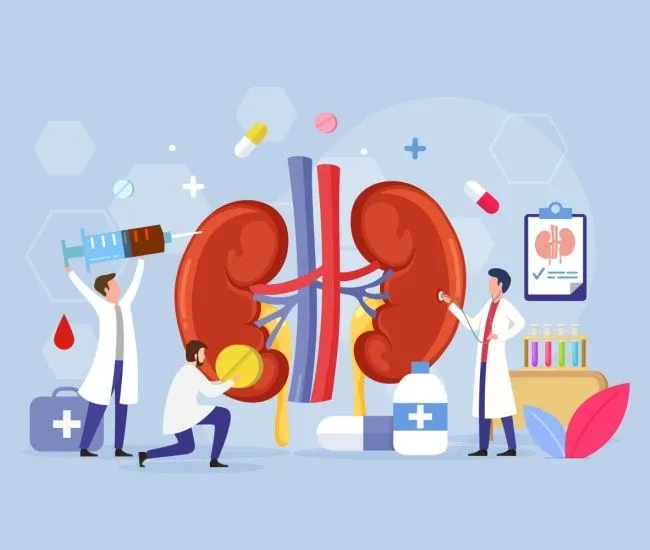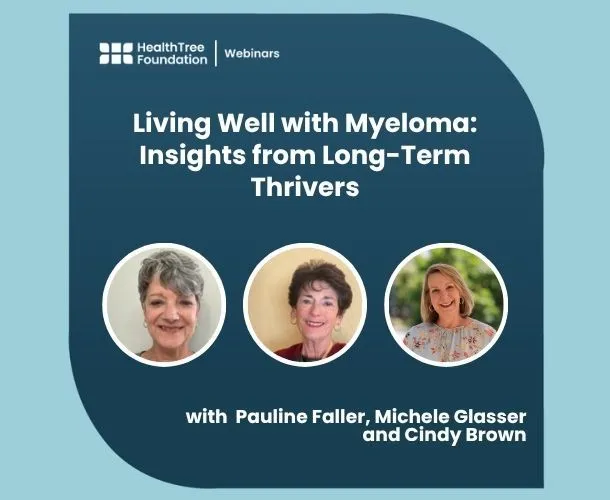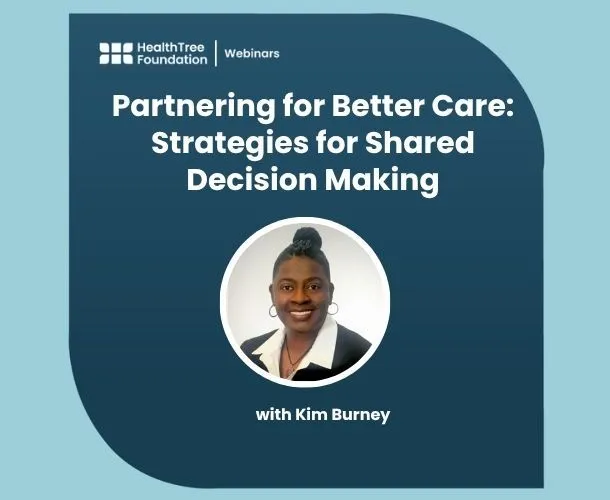Hope, Prayer and a Cure for Multiple Myeloma

BY JENNY AHLSTROM After my tandem transplants, I had two years of maintenance therapy and was left feeling the way most patients do post intensive treatment - shaky, weak, fatigued, and constantly concerned about the progression or stability of my disease. Because my mother's mantra to "do something" was ingrained in me from an early age, my husband and I decided that we would fill in the gaps in the world of myeloma with a new foundation and started brainstorming about what was required to cure this disease. An acquaintance heard about what we were doing and told us it was his life's mission to do this kind of work. He essentially hired himself (even though we weren't hiring yet) and I hoped and prayed that his work would lead to a miraculous cure. My hope rested on his efforts because I felt too weak to do much. Things didn't go as he planned and several months later, he fired himself. That day was my one of my greatest blessings. On that day I realized that I couldn't rely on someone else to cure me. In the flip of a switch, I took charge of my own destiny. That day began a myeloma journey that included more than visits to the clinic or counts of my markers, it was a day that forever altered the course of my life. One of the most common comments we get on the Myeloma Crowd Facebook groups are "I'm praying for a cure." I think we all hope and pray that some smart researcher somewhere will find the cure for myeloma, that it will be approved at an accelerated pace by the FDA, and that every doctor everywhere will learn about this new cure and start giving it to myeloma patients. Of course we do! That dream brings hope, which leads to prayer for divine help to make that happen. But what comes next? I have a deep belief that God hears and answers prayers and I pray to find a cure regularly, but I also believe that His intent is also for us to learn and grow while on this earth. I believe that He expects us to get on our knees and pray for help, and then get up off our knees and go to work. He is, of course, a parent. My kids are now home from the summer which makes me instantly relieved that I don't have to help with homework but panicked at keeping 5 kids sufficiently busy with LOTS of free time. In anticipation of this blessed/dreaded day, we had a family meeting where I asked them what their goals were for this summer. I loved their answers! "Become Zumba certified," "build a robot", "learn to cook", "learn new basketball moves." I had them write those goals down. As I watched them settle into their first day home in front of a movie marathon, I wondered with a smile how that wish was going to translate to reality. It was a head scratcher, truly. As a parent, I cannot do everything to make their dreams come true, or I would be the one with the Zumba certificate or have sweet basketball moves to spin and twist around my 11-year-old on the court. It requires action (Even work! Gasp!) on their part for them to build those skills for themselves and to make their dream a reality. It's no different for us as myeloma patients and we have real obstacles that are part of our reality. 1. Researchers have a very hard time getting funding they need to perform their research. One out of every 9 proposals used to be funded by the NIH. Now the number is 1 out of 12. As Craig Crews (inventor of Carfilzomib) noted, "The bad researchers have left the field and we are now cutting into bone." Myeloma is a rare disease and funding sources are limited. 2. Less than 3% of myeloma patients participate in clinical trials. This IS how research moves forward. If we tripled or quadrupled that percentage, researchers could come to their conclusions at an accelerated pace. 3. Less than 5% of myeloma patients donate to myeloma research. I get this - many patients are trying to just get through their treatment and survive this disease, but that still leaves us with a huge funding issue to move research forward. 4. Many myeloma patients see general oncologists who have no idea what is happening in the world of myeloma research. Many of us are satisfied to have them attend to our care because it is logistically convenient, regardless of how if affects our clinical outcomes. I think our biggest challenge is that most myeloma patients do not yet see the connection between their potential involvement and their own clinical outcomes. Hope and prayer are an essential part of what will be required to find a cure for multiple myeloma, but real faith is "a strong belief plus action." Our Father can help us in righteous and worthy pursuits, but He will seldom do something for us that we can do for ourselves, because this is how we grow. The growth for me personally has been real and tangible. When I first started, I had no clue what pomalidomide was or what a CAR T cell was. I had no idea which doctors had the most advanced research. I cried seeing over 450 open myeloma clinical trials and not knowing which one would be right for me. After thousands of hours of work over the past 3 years, I now have personal answers and am able to help others. The emotional reward has been stunning. Of course I still have anxiety when it's time to get my labs taken and life has it's normal struggles, but I am HAPPY. I am not gripped by fear at relapse, I know what questions to ask and what steps to take. I can now take specific thoughts and ideas to God in prayer when my own logic is exhausted and He can give me further direction about what is best for me personally. I still seek for answers but my questions have stepped up a few notches. Far beyond the personal benefits, it is so rewarding to hear from a patient who learned something from one of the Myeloma Crowd Radio shows or who joined a clinical trial because of something they read on the site. How awesome is that?! It's the ultimate reward! I believe that there is something that each one of us can do to cure this blasted disease. We are not helpless. We don't have to step foot in a lab to make a difference. Because I believe this, I started the Myeloma Crowd Research Initiative and then invited others to help. We now have an amazing Scientific Research Advisory Board and an equally amazingly educated and prepared Patient Advisory Board. We've reached out to find the very best research in the world that is potentially curative. We are now narrowing that down to just a few key projects that can move the bar. We will be funding these projects with 100% of the proceeds to be donated here so you know where the money will go. We now need YOU because we cannot do this alone. Today you can create a MCRI fundraising page (it takes less than 10 minutes). Upload your own photo and write your own text for your personal page. You don't need to share that page just yet. We will let you know when the final projects have been selected. With hope for our future, prayer to boost our own wisdom and insight, and tangible action, I believe we can cure multiple myeloma and invite you to join us TODAY! To learn more about the MCRI and the specific projects, click here.
BY JENNY AHLSTROM After my tandem transplants, I had two years of maintenance therapy and was left feeling the way most patients do post intensive treatment - shaky, weak, fatigued, and constantly concerned about the progression or stability of my disease. Because my mother's mantra to "do something" was ingrained in me from an early age, my husband and I decided that we would fill in the gaps in the world of myeloma with a new foundation and started brainstorming about what was required to cure this disease. An acquaintance heard about what we were doing and told us it was his life's mission to do this kind of work. He essentially hired himself (even though we weren't hiring yet) and I hoped and prayed that his work would lead to a miraculous cure. My hope rested on his efforts because I felt too weak to do much. Things didn't go as he planned and several months later, he fired himself. That day was my one of my greatest blessings. On that day I realized that I couldn't rely on someone else to cure me. In the flip of a switch, I took charge of my own destiny. That day began a myeloma journey that included more than visits to the clinic or counts of my markers, it was a day that forever altered the course of my life. One of the most common comments we get on the Myeloma Crowd Facebook groups are "I'm praying for a cure." I think we all hope and pray that some smart researcher somewhere will find the cure for myeloma, that it will be approved at an accelerated pace by the FDA, and that every doctor everywhere will learn about this new cure and start giving it to myeloma patients. Of course we do! That dream brings hope, which leads to prayer for divine help to make that happen. But what comes next? I have a deep belief that God hears and answers prayers and I pray to find a cure regularly, but I also believe that His intent is also for us to learn and grow while on this earth. I believe that He expects us to get on our knees and pray for help, and then get up off our knees and go to work. He is, of course, a parent. My kids are now home from the summer which makes me instantly relieved that I don't have to help with homework but panicked at keeping 5 kids sufficiently busy with LOTS of free time. In anticipation of this blessed/dreaded day, we had a family meeting where I asked them what their goals were for this summer. I loved their answers! "Become Zumba certified," "build a robot", "learn to cook", "learn new basketball moves." I had them write those goals down. As I watched them settle into their first day home in front of a movie marathon, I wondered with a smile how that wish was going to translate to reality. It was a head scratcher, truly. As a parent, I cannot do everything to make their dreams come true, or I would be the one with the Zumba certificate or have sweet basketball moves to spin and twist around my 11-year-old on the court. It requires action (Even work! Gasp!) on their part for them to build those skills for themselves and to make their dream a reality. It's no different for us as myeloma patients and we have real obstacles that are part of our reality. 1. Researchers have a very hard time getting funding they need to perform their research. One out of every 9 proposals used to be funded by the NIH. Now the number is 1 out of 12. As Craig Crews (inventor of Carfilzomib) noted, "The bad researchers have left the field and we are now cutting into bone." Myeloma is a rare disease and funding sources are limited. 2. Less than 3% of myeloma patients participate in clinical trials. This IS how research moves forward. If we tripled or quadrupled that percentage, researchers could come to their conclusions at an accelerated pace. 3. Less than 5% of myeloma patients donate to myeloma research. I get this - many patients are trying to just get through their treatment and survive this disease, but that still leaves us with a huge funding issue to move research forward. 4. Many myeloma patients see general oncologists who have no idea what is happening in the world of myeloma research. Many of us are satisfied to have them attend to our care because it is logistically convenient, regardless of how if affects our clinical outcomes. I think our biggest challenge is that most myeloma patients do not yet see the connection between their potential involvement and their own clinical outcomes. Hope and prayer are an essential part of what will be required to find a cure for multiple myeloma, but real faith is "a strong belief plus action." Our Father can help us in righteous and worthy pursuits, but He will seldom do something for us that we can do for ourselves, because this is how we grow. The growth for me personally has been real and tangible. When I first started, I had no clue what pomalidomide was or what a CAR T cell was. I had no idea which doctors had the most advanced research. I cried seeing over 450 open myeloma clinical trials and not knowing which one would be right for me. After thousands of hours of work over the past 3 years, I now have personal answers and am able to help others. The emotional reward has been stunning. Of course I still have anxiety when it's time to get my labs taken and life has it's normal struggles, but I am HAPPY. I am not gripped by fear at relapse, I know what questions to ask and what steps to take. I can now take specific thoughts and ideas to God in prayer when my own logic is exhausted and He can give me further direction about what is best for me personally. I still seek for answers but my questions have stepped up a few notches. Far beyond the personal benefits, it is so rewarding to hear from a patient who learned something from one of the Myeloma Crowd Radio shows or who joined a clinical trial because of something they read on the site. How awesome is that?! It's the ultimate reward! I believe that there is something that each one of us can do to cure this blasted disease. We are not helpless. We don't have to step foot in a lab to make a difference. Because I believe this, I started the Myeloma Crowd Research Initiative and then invited others to help. We now have an amazing Scientific Research Advisory Board and an equally amazingly educated and prepared Patient Advisory Board. We've reached out to find the very best research in the world that is potentially curative. We are now narrowing that down to just a few key projects that can move the bar. We will be funding these projects with 100% of the proceeds to be donated here so you know where the money will go. We now need YOU because we cannot do this alone. Today you can create a MCRI fundraising page (it takes less than 10 minutes). Upload your own photo and write your own text for your personal page. You don't need to share that page just yet. We will let you know when the final projects have been selected. With hope for our future, prayer to boost our own wisdom and insight, and tangible action, I believe we can cure multiple myeloma and invite you to join us TODAY! To learn more about the MCRI and the specific projects, click here.
about the author
Jennifer Ahlstrom
Myeloma survivor, patient advocate, wife, mom of 6. Believer that patients can contribute to cures by joining HealthTree Cure Hub and joining clinical research. Founder and CEO of HealthTree Foundation.
More on Navigating Your Health
Trending Articles




Get the Latest Multiple Myeloma Updates, Delivered to You.
By subscribing to the HealthTree newsletter, you'll receive the latest research, treatment updates, and expert insights to help you navigate your health.
Together we care.
Together we cure.
3x Faster.













